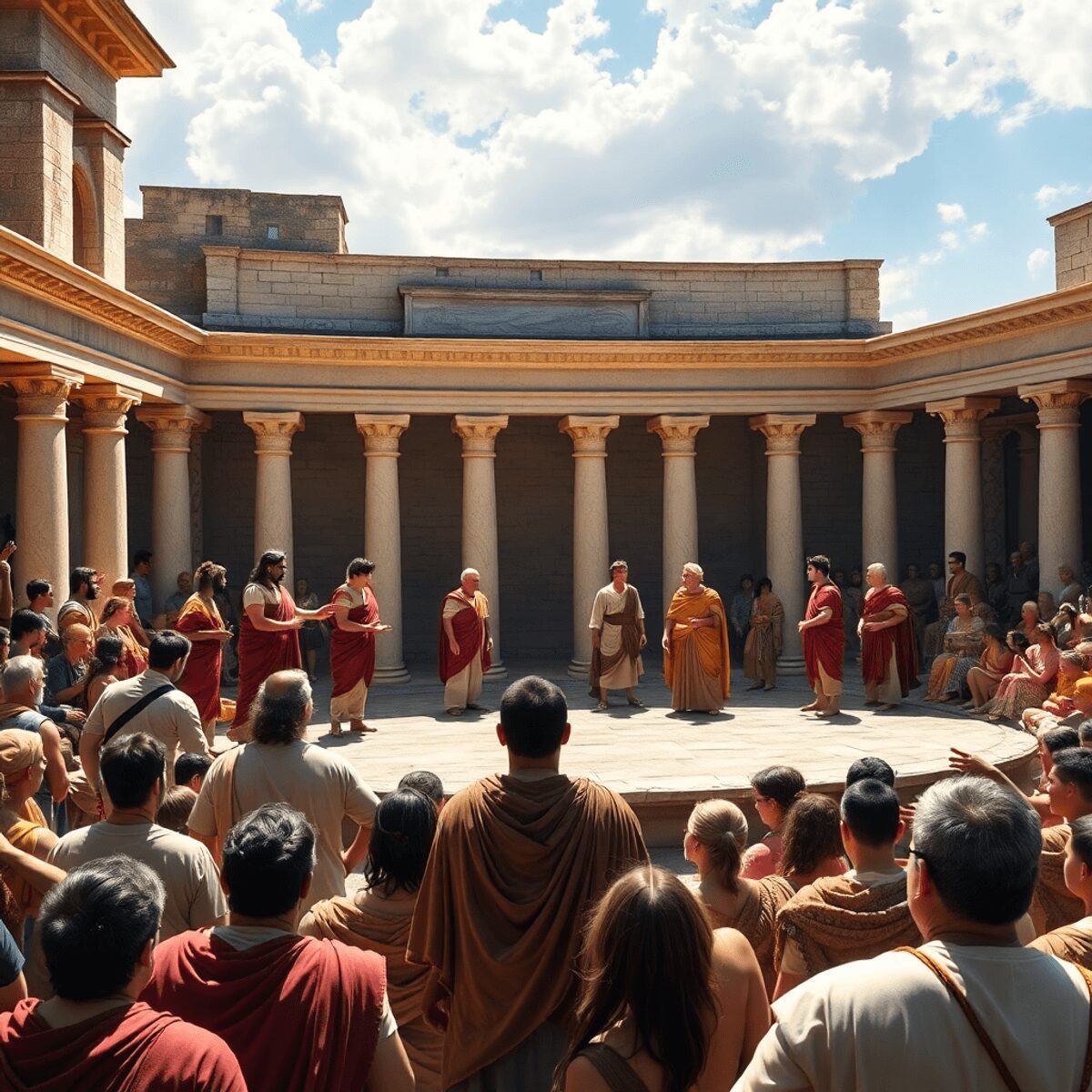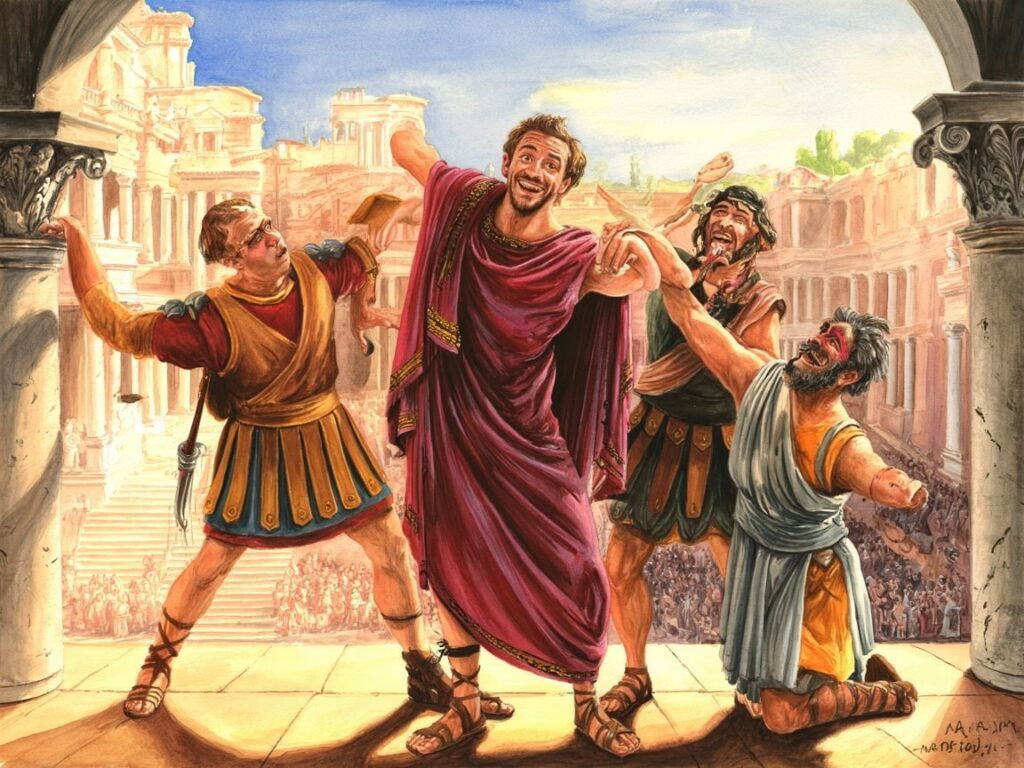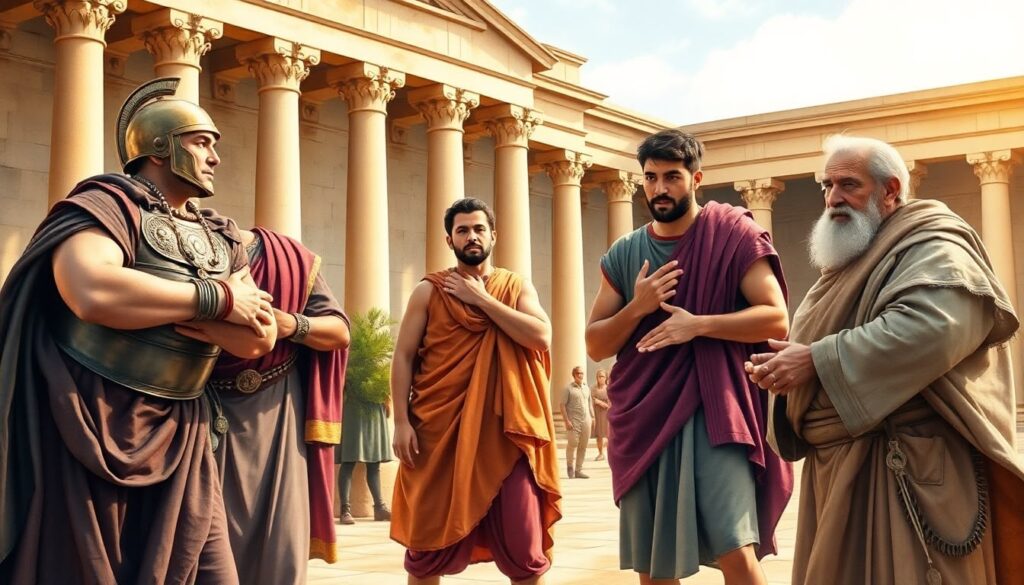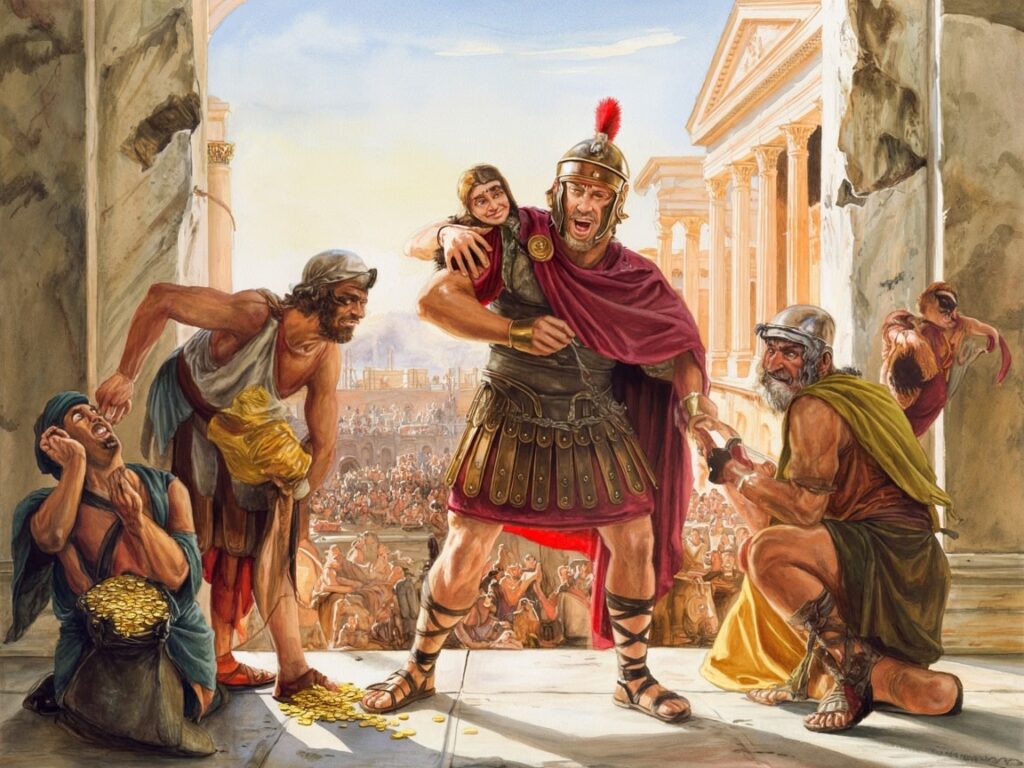Unraveling Ancient Roman Humor: Jokes, Satire, and Social Commentary opens a window into the world of ancient Roman humor, a rich and complex form of historical humor that shaped social interaction and cultural identity in Rome. Roman comedy, with its distinctive blend of witty jokes, sharp satire, and pointed social commentary, not only entertained but also reflected the values and tensions of Roman society.
Understanding ancient Roman humor offers more than just laughs from the past. It reveals how Romans used humor as a tool to critique authority, navigate social hierarchies, and bond with audiences across classes. Exploring these elements provides insight into the mechanisms behind Roman comedy’s enduring appeal and highlights its influence on modern comedic traditions.
This exploration invites you to see how jokes and satire functioned as mirrors to societal norms—and how humor served as both entertainment and subtle resistance within an ancient empire.

The Foundations of Ancient Roman Humor
Ancient Roman humor finds its roots deeply embedded in the works of two seminal playwrights: Plautus and Terence. Both figures dominated Roman comedic theater during the 3rd and 2nd centuries BC, shaping the comedic landscape that would influence generations.
Plautus vs Terence
- Plautus is known for his lively, farcical style filled with slapstick humor, witty wordplay, and exaggerated situations.
- Terence, on the other hand, favored more refined plots and character development, borrowing heavily from Greek New Comedy.
The Role of Comedy in Ancient Rome
Roman comedic plays served as a popular form of entertainment for a diverse audience, ranging from common citizens to the elite. Theater performances were often held in public spaces such as forums and amphitheaters, making them accessible to many social classes. These plays not only amused but also reflected the everyday issues and social dynamics of Roman life.
Similarities with Modern Comedy
The structure of ancient Roman comedy shares notable similarities with modern comedic forms:
- Setup and punchline format: Much like contemporary jokes, Roman plays built tension through setups that led to unexpected or humorous resolutions.
- Use of stock characters: Archetypal figures created immediate recognition and anticipation for the audience.
- Repetition and running gags: These devices enhanced humor through predictability and audience participation.
Differences from Modern Comedy
Differences arise primarily from cultural context and theatrical conventions:
- Romans incorporated metatheatrical elements where actors directly addressed spectators or commented on their roles—uncommon in most modern stand-up or sitcom formats. These metatheatrical elements added a unique layer to their performances.
- The humor was often more physical and exaggerated compared to today’s verbal wit-driven comedy.
- Social hierarchies influenced content; humor frequently reinforced or critiqued class structures unique to Roman society.
Understanding these foundations helps decode how ancient Romans used laughter as both entertainment and subtle social commentary within their theatrical tradition.

Character Archetypes in Roman Comedy
Roman comedy thrives on stock characters—recognizable figures whose traits and behaviors deliver instant humor. These Roman comedy characters act as comedic archetypes, shaping audience expectations and driving the narrative.
Key Archetypes
Key archetypes include:
- The Arrogant Soldier (Miles Gloriosus): Boastful yet cowardly, this character exaggerates his bravery and martial skills but often ends up humiliated. His overconfidence mocks the pretensions of military prowess and social status.
- The Flattering Parasite: A sycophantic figure who clings to wealthier patrons, using insincere praise and cunning schemes to secure favors. This character exposes societal dependence on patronage and reflects the opportunistic side of Roman social dynamics.
- The Clever Slave: Witty, resourceful, and quick-thinking, this slave outsmarts his social superiors to manipulate situations in favor of his master or himself. Representing intelligence beneath a lowly status, he challenges traditional power hierarchies with humor.
- The Old Miser (Senex): Often grumpy and stubborn, the miser is obsessed with money and control. His rigidity contrasts with younger characters’ vitality, highlighting generational conflicts and resistance to change.
Societal Commentary
These archetypes mirror societal roles and attitudes prevalent in Roman culture—the soldier’s empty bravado reflects militarism, the parasite underscores social dependency, the clever slave inverts class expectations, and the miser personifies greed and conservatism. Their exaggerated features invite laughter while offering commentary on human nature and society’s structure.
Lasting Influence
Roman comedic archetypes remain influential; many appear in modern comedy through similar stock figures shaped by these ancient prototypes.

Structure and Devices of Roman Jokes
Roman jokes often followed a clear setup and punchline format, a structure recognizable in modern comedy. The setup would introduce a scenario, character, or expectation, creating tension or curiosity. The punchline then delivered an unexpected twist or resolution, generating humor through surprise or incongruity.
Key Elements of Joke Structure in Ancient Rome
Key elements of joke structure in ancient Rome included:
- Direct simplicity: Jokes were concise and to the point, relying on sharp contrasts between setup and payoff.
- Character-driven humor: Punchlines frequently hinged on traits of well-known stock characters, reinforcing audience familiarity.
- Wordplay and puns: Clever language use added layers of meaning and wit, similar to the language play that was prevalent in ancient Greek comedy.
The Role of Repetition in Roman Comedy
Repetition played a crucial role as a comedic device. Roman playwrights employed “game” structures, where a phrase, gesture, or pattern was repeated multiple times, often escalating annoyance for one character while amusing the audience. This technique built comedic tension gradually before delivering a humorous release.
Examples include repeated boasts by the arrogant soldier that grow increasingly absurd or persistent flattery by the parasite that borders on ridiculous. These repetitive exchanges became predictable yet funny due to timing and delivery.
The combination of setup-punchline clarity with repetition and escalating games created a dynamic rhythm in Roman comedy. This rhythm engaged audiences actively, inviting them to anticipate patterns while enjoying the eventual surprises embedded within familiar joke structures.
Unraveling Ancient Roman Humor: Jokes reveals how these devices not only entertained but also reflected social dynamics through laughter rooted in everyday human behavior.

Metatheatre and Self-Awareness in Roman Comedy
Metatheatre plays a significant role in ancient Roman comedy by introducing self-awareness and actively engaging the audience. This theatrical device allows characters to break the “fourth wall,” stepping outside the story to address spectators directly or comment on their own existence within the play. Such moments create a shared experience between actors and viewers, blurring the boundaries between performance and reality.
Examples of metatheatre in Roman comedy include:
- Characters speaking directly to the audience: Actors often deliver asides or monologues that reveal their thoughts or intentions, inviting the audience into their confidence.
- Acknowledgment of theatrical conventions: Some dialogues highlight the artificial nature of the plot or character roles, making spectators aware they are watching a constructed narrative.
- Self-referential humor: The plays sometimes poke fun at themselves, their authors, or the actors, adding layers of irony and wit.
Plautus frequently employed these techniques, using characters who mock their own foolishness or comment on typical theatrical tropes. This self-awareness adds depth to the humor, as viewers recognize the joke not just within the story but about storytelling itself.
Metatheatre enhances Roman comedy by making it interactive. It invites you to participate mentally rather than passively observe, encouraging a clever appreciation for both the content and form of humor as it unfolds on stage.
Satire and Social Commentary in Roman Humor
Satire in Rome was a powerful tool used to criticize social norms and political situations. Roman playwrights and poets used humor to expose the flaws, dishonesty, and foolishness of society, with a particular focus on the ruling class and existing power structures.
Key features of satire and social commentary include:
- Political Satire: Public figures, corrupt officials, and ambitious politicians were frequent subjects. Jokes often highlighted their greed, incompetence, or moral failings.
- Critique of Elites: Satirists mocked aristocrats who flaunted wealth or abused privilege, using humor to question their authority and social status.
- Social Behaviors: Everyday customs such as extravagant banquets, vanity, or superstition became comedic material to reveal broader societal weaknesses.
- Moral Lessons: Beneath the laughter lay implicit calls for reform or reflection on ethical conduct.
Roman satire combined cleverness with fearlessness, allowing audiences to confront sensitive subjects while being entertained. This method turned satire into a potent form of social commentary that went beyond mere entertainment.
“Satire is a sort of glass, wherein beholders do generally discover everybody’s face but their own.” — Jonathan Swift
In Roman comedy and literature, humor served a purpose beyond amusement; it reflected societal truths and encouraged self-reflection among its audience. The sharp nature of satire played a role in maintaining a balance between social stability and criticism through laughter.

Cultural Sensitivities and Controversial Themes
Ancient Roman comedy reflects sexism in ancient Rome through its frequent portrayal of women as objects of ridicule or as morally dubious figures. Gender stereotypes were deeply embedded in these plays, reinforcing the idea of male dominance as a societal norm. Women characters often lacked complexity, serving mainly as foils for male protagonists or sources of humor rooted in their supposed weaknesses or cunning.
Key aspects include:
- Male dominance normalized: The humor assumes a patriarchal society where men hold authority, and women’s roles are limited to domestic or subservient positions.
- Sexist portrayals: Female characters are often depicted as either overly flirtatious, manipulative, or naïve, reflecting contemporary biases rather than nuanced personalities.
- Audience expectations: Since the plays catered to a largely male political elite, jokes targeting women or elevating male superiority were socially acceptable and even encouraged.
Many themes from Roman comedy clash with modern values on equality and respect. What was once considered humorous now appears offensive or inappropriate because it perpetuates harmful stereotypes and marginalizes half the population. Understanding these cultural differences in humor helps you appreciate the historical context without endorsing outdated attitudes.
Unraveling Ancient Roman Humor: Jokes, Satire, and Social Commentary means recognizing both the comedic genius and the problematic elements that reveal much about Roman society’s worldview. This awareness enriches your perspective on how humor evolves alongside cultural progress.
Enduring Legacy and Modern Parallels
Ancient Roman humor’s influence on modern comedy is striking, revealing a historical continuity in humor that spans centuries. The comedic archetypes established by playwrights like Plautus and Terence persist in contemporary entertainment. Characters such as the arrogant soldier resemble today’s brash yet bumbling authority figures, while the clever slave parallels the witty underdog archetype frequently seen in sitcoms and films.
Certain tropes have endured with remarkable consistency:
The pompous older man: This figure, often portrayed as out of touch or self-important, appears across comedic genres from Shakespearean plays to modern sitcoms like The Big Bang Theory. His exaggerated seriousness creates opportunities for humor through contrast with younger, more dynamic characters.
The flattering parasite: The sycophantic character who manipulates others for personal gain remains a staple in workplace comedies and political satire.
Roman comedy’s structure—especially its use of setup and punchline, repetition, and playful “games”—can be traced through centuries of comedic writing. These devices engage audiences by creating patterns that build anticipation and deliver satisfying releases of tension.
Humor rooted in social roles and human foibles connects ancient Rome to today’s diverse audience experiences. Recognizing this link enriches your appreciation of how comedy evolves while maintaining core elements that continue to amuse and provoke thought.
Conclusion
Unraveling Ancient Roman Humor: Jokes, Satire, and Social Commentary offers more than just laughs from the past. It provides a summary of Roman humor insights that deepen your understanding of comedy’s evolution. By studying historical humor, you see how jokes and satire reflect societal values, power dynamics, and human nature across centuries.
Roman humor’s ability to resonate with audiences—through character archetypes, sharp wit, and social critique—demonstrates comedy’s timeless role in culture. You recognize familiar comedic patterns in today’s entertainment, proving that humor adapts yet remains deeply connected to its roots.
Appreciating this ancient tradition enriches your perspective on modern comedy and highlights the importance of historical humor study as a lens for cultural insight. Humor is not static; it is an evolving dialogue between past and present societies, constantly shaping how we laugh at ourselves and the world around us.

